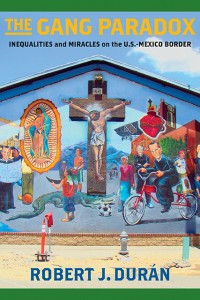CSUN Lecture to Explore ‘The Gang Paradox’ Along the U.S.-Mexico Border

Robert J. Durán
Former gang-member-turned-scholar, Robert J. Durán, will explore how the label “gang member” is used to criminalize Latino youth along the border between the United States and Mexico, during a lecture at California State University, Northridge on Monday, April 29.
Durán, a nationally recognized expert on gangs and a professor at Texas A&M University, will discuss his latest book, “The Gang Paradox: Inequalities and Miracles on the U.S.-Mexico Border,” and his own experiences with gangs. His talk is scheduled to take place from 5 to 6:45 p.m. in room 104 of Sequoia Hall.
“Durán’s work on gangs on the border is particularly important in our current climate of stereotyping and criminal portrayals of marginalized groups,” said Vickie Jensen, chair of CSUNs Department of Criminology and Justice Studies. “His in-depth, ethnographic look at Latino gangs reveals the multifaceted harm that these inaccurate and damaging portrayals have on the lives of the Latino youth and families on the border, and underscores the importance of confronting unsupported and dangerous claims with systematic data and real experience. It reminds all of us that we must critically engage racism and oppression with sound science and humanism.”
Durán, an associate professor of sociology at Texas A&M, focuses on modern-day racism and community resistance in his research, from gang evolution and border surveillance to disproportionate minority contact and law enforcement shootings.
 Durán notes in “The Gang Paradox” that the areas along the U.S.-Mexico border are commonly portrayed as hot spots for gang activity, drug trafficking and violence. He conducted almost a decade’s worth of ethnographic research in border towns between El Paso, Texas, and southern New Mexico — a region notorious for gang activity, according to federal officials — and found significantly less gang membership and activity than the claims would have people believe. Instead, he said, he witnessed how the gang label was used to criminalize youth of Mexican descent — to justify the overrepresentation of Latinos in the justice system, the implementation of punitive practices in the school system and the request for additional resources by law enforcement.
Durán notes in “The Gang Paradox” that the areas along the U.S.-Mexico border are commonly portrayed as hot spots for gang activity, drug trafficking and violence. He conducted almost a decade’s worth of ethnographic research in border towns between El Paso, Texas, and southern New Mexico — a region notorious for gang activity, according to federal officials — and found significantly less gang membership and activity than the claims would have people believe. Instead, he said, he witnessed how the gang label was used to criminalize youth of Mexican descent — to justify the overrepresentation of Latinos in the justice system, the implementation of punitive practices in the school system and the request for additional resources by law enforcement.
In “The Gang Paradox,” Durán analyzes the impact of deportation, incarceration and racialized perceptions of criminality on Latino families and youth along the border. Durán, himself a former gang member, offers insights into youth experience with schools, juvenile probation and law enforcement.
For more information about his lecture, call CSUN’s Department of Criminology and Justice Studies at (818) 677-2117.

 experience
experience